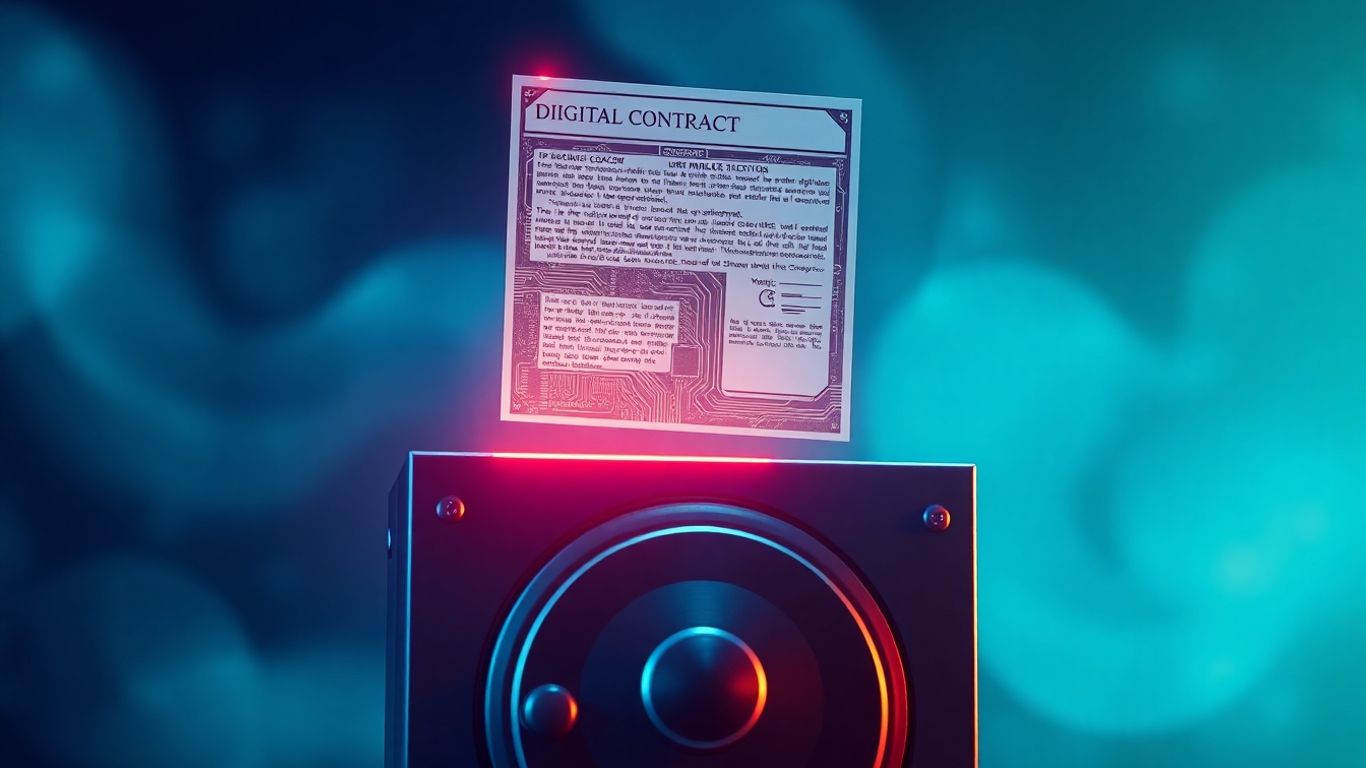[ newsletter ]
Stay ahead of Web3 threats—subscribe to our newsletter for the latest in blockchain security insights and updates.
Thank you! Your submission has been received!
Oops! Something went wrong. Please try again.
Stay informed with whale movement alerts crypto. Track large transfers, token swaps, and market impacts to refine your trading strategies.





Ever wonder what those massive crypto transfers mean? You know, the ones that pop up on your feed and make you think, 'Whoa, what's going on there?' Well, those are often whale movements, and paying attention to them can give you a peek into what might happen next in the crypto market. This article is all about understanding these whale movement alerts crypto folks talk about, what they signal, and how you can use that info.
So, what exactly are these "whale alerts" everyone's talking about in the crypto world? Basically, they're notifications that pop up when someone with a massive amount of a particular cryptocurrency makes a big move. Think of them as early warnings for significant market shifts. These aren't just random transactions; they're actions taken by individuals or groups who hold enough digital assets to potentially sway prices. Paying attention to these movements can give you a heads-up on what might be coming next in the market.
A crypto whale is pretty much what it sounds like: an entity holding a really large chunk of a specific digital currency. We're not talking about a few thousand dollars here. We're talking about wallets that control millions, or even billions, worth of tokens. For instance, holding over 1,000 Bitcoin would definitely put you in the whale category. These big players have the power to move markets just by buying or selling a portion of their holdings. Their actions can really shake things up, and that's why monitoring platforms keep a close eye on them. You can find more details on what makes a Bitcoin whale by checking out some resources.
Why should you care about whale alerts? Because crypto markets are notoriously jumpy. A whale making a big purchase might signal they believe a token has a bright future, potentially leading to price increases. On the flip side, if a whale starts dumping a huge amount of tokens, it can cause panic among smaller investors, leading to sharp price drops. Sometimes, just seeing large amounts of crypto moved to exchanges like Coinbase or Binance can indicate that a whale is preparing to sell, putting downward pressure on prices. These alerts act as a sort of real-time market sentiment indicator, straight from the biggest players.
These alert systems work by constantly scanning the blockchain for transactions that meet specific criteria. They're looking for things like:
These systems essentially act as digital watchdogs, sifting through the constant stream of blockchain data to identify and report on the most impactful transactions. They help traders and investors stay informed about the activities of major market participants without having to monitor every single transaction themselves.
These systems often provide details like the amount transferred, the sender and receiver addresses, and the exact time of the transaction. Some even offer customizable alerts, letting you set specific parameters for the notifications you want to receive, like focusing only on certain tokens or transaction sizes.
When we talk about whale alerts in crypto, we're really looking at specific actions that signal big players are making moves. These aren't just random transactions; they're usually deliberate actions that can shake things up.
This is a big one. When a wallet known to hold a massive amount of a certain coin suddenly sends a huge chunk of it to a centralized exchange like Binance or Coinbase, it often means they're preparing to sell. Think of it like a big investor moving their stock to a brokerage before a big sell-off. It doesn't always mean they'll sell immediately, but the intention is usually there.
Moving large sums to an exchange is a classic precursor to selling pressure. It's a way for whales to ensure they have the liquidity to offload their holdings without drastically impacting the price themselves in the immediate moment of the transfer.
Whales don't just hold one asset. They often trade between different cryptocurrencies, especially on decentralized exchanges (DEXs). When you see a massive swap – say, millions of dollars worth of ETH being exchanged for a lesser-known altcoin, or vice-versa – it's worth paying attention. This could indicate a whale is rebalancing their portfolio, taking a strong conviction bet on a new asset, or even exiting a position.
Blockchains aren't isolated islands anymore. With bridges and cross-chain protocols, assets can move between networks like Ethereum, Solana, and Binance Smart Chain. A whale making a large transfer from one chain to another, especially if it involves moving assets to a DEX or lending protocol on the new chain, can signal a strategic shift. They might be chasing better yields, accessing new opportunities, or diversifying their holdings across different ecosystems.
This is a bit more advanced. It refers to trades that show a consistently high level of outperformance compared to the market average – what traders call 'alpha'. If a particular wallet is repeatedly making highly profitable trades, especially in less liquid or mid-cap tokens, it suggests they have some serious insight or an edge. Alerts for these wallets aren't just about the size of the trade, but the quality and consistency of their profitable moves. It's like spotting a legendary investor whose every move seems to pay off.
When a crypto whale makes a move, it's rarely a quiet affair. These massive transactions can send ripples, and sometimes tidal waves, through the market. Think of it like a giant ship changing course – it displaces a lot of water.
Whale movements can act as an early warning system, hinting at where the market might be headed. If a whale starts accumulating a specific token, it could mean they see future potential, and others might follow suit. Conversely, a large sell-off might signal a loss of confidence.
These actions aren't just random; they're often strategic plays based on deep market analysis or inside information. Observing these patterns can give smaller investors a glimpse into the thinking of major market players.
Let's be real, big transactions equal big price swings. When millions of dollars worth of crypto move suddenly, it can cause a stir. This is especially true for smaller altcoins with less trading volume. A single large trade can dramatically alter the price in a short amount of time.
It's pretty straightforward: supply and demand. When a whale buys a lot of a token, demand goes up, pushing the price higher. If they decide to sell a huge chunk, the supply increases, and the price usually drops. This direct impact on supply and demand is why whale alerts are so closely watched. For smaller tokens, even a moderate whale transaction can have a disproportionately large effect on the price, sometimes leading to rapid pumps or dumps.
So, you've heard about whale alerts, but how do you really get ahead of the game? It's all about using the right tools to dig deeper. Think of blockchain analytics platforms as your super-powered magnifying glass for the crypto world. These tools don't just show you a big transaction; they can trace where that money came from, where it's going, and even who might be behind it. They look at patterns, like a whale consistently buying a certain token or moving funds between different decentralized finance (DeFi) protocols. By analyzing this on-chain data, you can start to predict potential market moves before they even happen. It's like having a cheat sheet for the crypto market, but it's all based on real, verifiable data.
Getting an alert is one thing, but getting it right now is another. For serious traders, waiting even a few minutes can mean missing out on a prime opportunity. That's why real-time notifications are so important. Imagine a whale suddenly moves a massive amount of a token to a decentralized exchange (DEX). If you get that alert instantly, you can react immediately. Maybe you decide to sell before they do, or perhaps you see it as a buying opportunity if you think they're just rebalancing. Platforms that offer instant alerts, often through apps or even Telegram bots, give you that crucial edge. It means you're not just reacting to news; you're reacting to the actual market activity as it unfolds.
Just seeing a large transfer isn't the whole story. Advanced tracking involves looking at the behavior of these whale wallets over time. Does this wallet consistently buy dips and sell peaks? Do they move funds to staking pools or liquidity farms? Are they interacting with new, high-risk DeFi protocols? By building a profile of a whale's typical actions, you can better interpret their current moves. For example, a whale known for long-term holding suddenly moving funds to an exchange might signal a sell-off, but if they're moving it to a known staking service, it might just be them looking to earn yield. It’s about understanding the context behind the numbers.
The crypto market moves fast, and relying on basic alerts can leave you behind. True advantage comes from using sophisticated analytics tools to understand the 'why' behind whale transactions, not just the 'what'. This deeper analysis helps in making more informed decisions, moving beyond simple reactions to proactive strategies.

So, you've got these whale alerts firing off, showing massive crypto movements. What do you actually do with that information? It's not just about seeing big numbers; it's about using them to make smarter moves yourself. Think of it like getting a heads-up that a big player is making a move in the stock market – you wouldn't just ignore it, right? Same idea here, but with crypto.
First things first, you gotta pay attention. These alerts are coming in real-time, so you can't just glance at them once a day. You need to be watching them as they happen, or at least have a system that flags the really important ones for you. It’s about catching those moments when a whale is buying up a ton of a coin, or dumping it all at once. These actions can really shake things up.
The key here is consistency. Sporadic checking won't cut it. You need to build whale alert monitoring into your daily routine, treating it like any other important market signal.
Okay, you're watching the alerts. Now, how do you use them to actually trade? This is where it gets interesting. Whale movements can be like early warnings for price changes. If you see a whale moving a huge amount of a coin to an exchange, that often means they're preparing to sell. Conversely, if they're moving it off an exchange into a private wallet, they might be holding for the long term or preparing for a big buy.
Here’s a breakdown of how to think about it:
Just watching alerts isn't enough for long-term success. You need to dig deeper. This means using blockchain analytics tools to understand who these whales are, what their past behavior looks like, and how their moves have impacted prices before. It’s about building a more sophisticated approach than just reacting to raw data.
By combining real-time alerts with solid analytics, you can move from simply reacting to whale movements to proactively using them to inform your trading decisions. It’s a more advanced way to play the crypto game.

These scams are getting pretty sophisticated, and honestly, a bit scary. Pig butchering scams, for example, have seen a big jump in revenue and the number of people falling for them. It seems like scammers are targeting more people, even if they're getting smaller amounts from each victim. They spend less time building trust, just going for volume. Then there are crypto drainers, which are also growing fast. These are malicious programs that trick you into connecting your wallet, and poof, your crypto is gone. Sometimes they even pose as official organizations to get you to click those dangerous links.
This one's a bit sneaky. Scammers look at how you usually move your crypto and then create a fake address that looks a lot like one you interact with often. They send a tiny amount of crypto to your wallet from this fake address. The idea is that when you go to send crypto later, you might accidentally send it to the scammer's address instead of the one you intended. It's like poisoning your contact list. We've seen a massive increase in crypto sent to these types of scams, often targeting people with larger wallet balances.
So, where does all this stolen or laundered money end up? For a while, centralized exchanges (CEXs) were the go-to spot. But as scams spread across more blockchains, decentralized finance (DeFi) protocols are becoming a bigger destination. It's a constant game of cat and mouse, with criminals adapting their methods to exploit new platforms and technologies to hide their tracks.
The landscape of crypto crime is always shifting. What worked yesterday might not work today. Criminals are getting smarter, using new tools and techniques to obscure their activities. This means we all need to stay informed and cautious, especially when dealing with unfamiliar links or unexpected transactions.
Here's a quick look at some common laundering techniques:
Money laundering in the crypto space still follows the classic three-stage model: placement, layering, and integration. However, blockchain technology gives these stages a unique twist. Criminals introduce illicit funds into the crypto system, then try to obscure their origin through complex transactions, and finally, they aim to make the funds appear legitimate.
The transparency of blockchain, which is a strength for legitimate users, can also be used by investigators to track down illicit activities if they know what to look for. It's a constant cat-and-mouse game.
Criminals use a variety of methods to launder cryptocurrency. Some of the most common include:
The landscape of crypto crime is always changing. New threats keep popping up, and staying ahead requires constant vigilance and adaptation.
The fight against crypto crime requires a combination of advanced blockchain analytics tools, strong regulatory frameworks, and international cooperation. Law enforcement agencies and financial institutions are working together, using tools that can trace transactions across different chains and identify suspicious patterns. Public-private partnerships are also becoming more common, pooling resources and expertise to freeze illicit assets and apprehend criminals.
So, keeping an eye on these big crypto players, the 'whales,' is pretty important if you're trading. When they move large amounts of crypto, it can really shake things up. While these alerts aren't a crystal ball, they give you a heads-up on potential market shifts. Think of it like watching the tides – you might not control them, but knowing they're coming helps you prepare. It’s just another tool to help you make smarter decisions in this wild crypto space.
Think of a crypto whale like a big fish in the ocean. In the crypto world, a whale is someone who owns a super large amount of a certain digital coin. They have so much that their actions, like buying or selling, can actually make the price of that coin go up or down.
Whales have a lot of power in the crypto market. When they make a big move, it often hints at what might happen next. For example, if a whale suddenly sells a ton of coins, it might mean the price is about to drop, and it's a good time for others to sell too. It's like getting a heads-up from someone who knows what's going on.
These systems are like digital detectives. They constantly watch the blockchain, which is like a public record book for all crypto transactions. When they spot a really big transaction—like someone sending millions of dollars worth of crypto somewhere—they send out an alert so people know about it right away.
Alerts usually go off when whales do things like send huge amounts of crypto to a coin exchange (maybe to sell it), swap massive amounts of one coin for another, or move large sums between their different digital wallets. Sometimes, if a whale makes a really smart trade that makes a lot of money, that can also trigger an alert.
Yes, they can be a helpful tool! By watching what whales do, you can get an idea of market trends. If a whale is buying a lot of a coin, it might be a good time for you to consider buying too. If they're selling, you might want to think about selling. It helps you make more informed choices instead of just guessing.
Some platforms offer free whale alerts, while others charge money. Free options might give you basic information, like when large amounts of crypto are moved. Paid services often provide more detailed analysis, real-time notifications across different apps like Telegram or Slack, and the ability to customize alerts to your specific needs.


